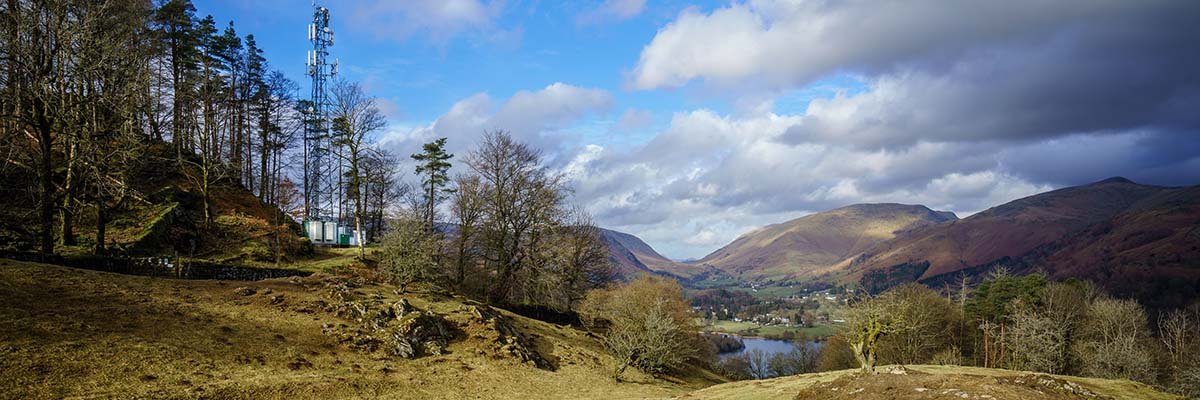Residents and businesses in many Lake District areas will soon be able to access fast, reliable mobile coverage regardless of which operator they’re signed up with thanks to the first of 83 UK government-funded 4G mast upgrades planned in England being switched on near the market town of Keswick in Cumbria under the Shared Rural Network (SRN) scheme.
The boost has been carried out by upgrading existing mobile masts, which previously only connected EE customers and anyone making 999 calls, meaning communities can benefit from improved connectivity without the visual impact involved when building new masts.
The move is designed to enable residents, tourists and businesses to access reliable 4G coverage from all four mobile network operators (MNOs) – EE, Virgin Media O2 (VMO2), Three and Vodafone – closing the connectivity black hole and boosting economic growth in the region.
The principle of the £1.3bn SRN programme, launched in 2020, is that through public and private investment, new and existing phone masts will be built or upgraded across the UK to eliminate so-called rural mobile notspots.
Under the scheme, EE, VMO2, Three and Vodafone have committed to improving 4G coverage and levelling up connectivity across the UK, which has seen the MNOs invest in a shared network of new and existing phone masts, overseen by a jointly owned company called Digital Mobile Spectrum Limited (DMSL). The operators’ £532m investment is being complemented by more than £501m in government funding.
Since April 2021, Building Digital UK (BDUK), an executive agency of the UK’s Department for Science, Innovation and Technology (DSIT), has been responsible for the overall delivery of the SRN on behalf of DSIT. Responsibility for digital connectivity transferred from the Department for Digital, Culture, Media and Sport to DSIT in the machinery of government changes in February 2023.
The government funding includes £184m to upgrade extended area service (EAS) masts to provide coverage from all four mobile operators. Currently, commercial coverage from EAS masts is only available from EE, the operator responsible for the UK’s Emergency Services Network.
The remaining government funding will go towards eliminating total notspots. The programme also aims to improve geographic coverage to 79% of areas of outstanding natural beauty, up from 51% before the programme launched, and 74% of national parks, up from 41%, aiming to benefit visitors.
To date, an additional 13,000km2 – an area roughly the size of Northern Ireland, or two million football pitches – has gained coverage from all four mobile network operators under the scheme. The government and the MNOs aim to provide coverage to an additional 280,000 premises and 16,000km of the UK’s roads.
The UK’s mobile phone operators have demonstrated good progress in rolling out new and upgraded 4G coverage in traditionally hard-to-reach areas as part of the SRN scheme. However, according to a March 2024 report from the UK’s National Audit Office (NAO) – Supporting mobile connectivity – the operators’ progress has not yet been matched by the UK government, whose plans to extend 4G mobile connectivity and broaden consumer choice in rural areas are behind schedule.
Given this, the UK government regards the Cumbria upgrade as an important milestone in the roll-out of the SRN.
“We’re dialling up fast and reliable mobile coverage across the UK through the Shared Rural Network. Our latest upgrade in the Lake District is one of many we’re working hard to deliver as part of our mission to clamp down on the headache of mobile notspots,” commented UK digital infrastructure minister Julia Lopez.
“The coverage boost will provide endless benefits for communities and visitors, ensuring people stay connected on the go, enabling people to work more efficiently and attracting vital investment to the rural economy,” she said.
DMSL CEO Ben Roome added: “In England, since the Shared Rural Network was announced in March 2020, 4G coverage from all four operators has expanded across an additional 5,400km2, an area larger than Norfolk. As more shared mobile sites go live, people visiting and living in rural areas will see better 4G service thanks to this programme.”

